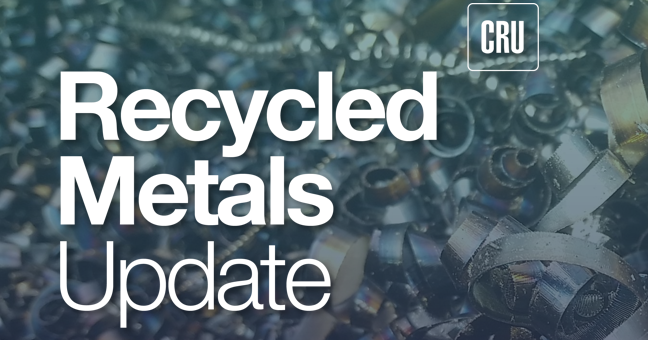Product

August 29, 2024
SDI sees return on recycling
Written by Stephanie Ritenbaugh
With a surplus of ferrous scrap supply in the US, Steel Dynamics Inc. (SDI) said one key to maintaining costs is watching the price of conversion.
When it comes to feeding electric arc furnaces (EAF), “Our Omni team is working very closely with us to make sure we have access to the right materials,” said Barry Schneider, president and COO of the Fort Wayne, Indiana-based steelmaker. SDI also is one of the largest metals recyclers in North America and owns several Omni recycling operations.
Speaking Monday at Steel Summit 2024 in Atlanta this week, Schneider said the company pays close attention to the conversion costs of turning scrap into hot-rolled steel.
“As many of you know, the price of scrap is, in some cases, higher than the price of hot band,” he said.
When asked about conversion costs, whether they may be in the $100 range or, perhaps $200, Schneider declined to specify a figure, instead jokingly saying it was “somewhere in that range.”
“Over the last 30 years that we’ve been operating, I will tell you that our conversion cost hasn’t drifted more than 25%, and that’s with the different inflationary pressures that we see.”
One cost advantage to EAFs is that they can be turned on and off.
“A blast furnace has to be — they’re on or they’re costing a lot of money,” he said. Blast furnaces may make iron cost effectively, but it also means a high price tag as the supply chain has a lot of carbon and a lot of energy, he noted.
But he doesn’t see an end to blast furnaces any time soon.
“EAFs are a great technology, and as you incorporate iron making in that for the flat-rolled side, that becomes the bridge,” Schneider said. “Worldwide, we’re starting to see projects that are doing just that. Think of the best of what you can get from liquid metal, from iron, what you can do with scrap, and how efficiently you can do that.
“I don’t see a situation where the furnace will start shutting down,” he said. “It would have to be pretty dire in that situation. And that’s where the conversion cost is so important, to be the last guys that stay in the fight.”
Value in copper
Copper content can be a challenge when handling obsolete scrap. But there are ways for ferrous recyclers to extract more value from the red metal.
“As we talk about the quality of copper, it becomes the bad guy,” Schneider said. “It’s not good for flat-rolled steel.”
One key is to make sure the copper level is appropriate for the end user.
“There’s value in all those things that we take out of that supply chain, from zorba to twitch, these things have different metals in them that we find of value.”
To that end, SDI has been investing in technology in shredding yards.
In SDI’s most recent earnings call in July, Schneider said the metals recycling team is “partnering even more closely with both our steel and aluminum teams to expand scrap separation capabilities through both process and technology solutions. This will help mitigate potential prime ferrous scrap supply issues in the future. It will also provide us with a significant advantage to materially increase the recycled content in our aluminum flat rolled products and increase our earning potential.”
“The technology we have, we’re deploying in more and more of our scrap operations. But it’s just as important that when shred shows up at the mill, we know when to use it,” he said.
For example, he said, if you’re shooting for 0.2 carbon, it’s great. If you get a 0.25, it’s bad. But if you get a 0.15 and the customer doesn’t really need that, you wasted your money, Schneider described.
“The tools the mills are developing specifically are known of how to track industrial how to logistically handle it, when to put into furnace.”
Farm-to-table
Schneider said the bottom line to recycling is that it has a return.
“We’re not doing this for political reasons or for virtue,” he said. “We’re doing it because we have a great footprint.”
SDI uses about 85% scrap in flat-rolled steel, and more in other products.
“I describe this as the farm-to-table of steel, where we use local resources, local people and have regional customers,” Schneider said.
SDI said it has hit its 2025 decarbonization goals. Now it’s looking to 2030.
“We believe these are return items,” Schneider said. “We’re going to make money on these projects. This isn’t a charity. It’s just another way to do business.”







